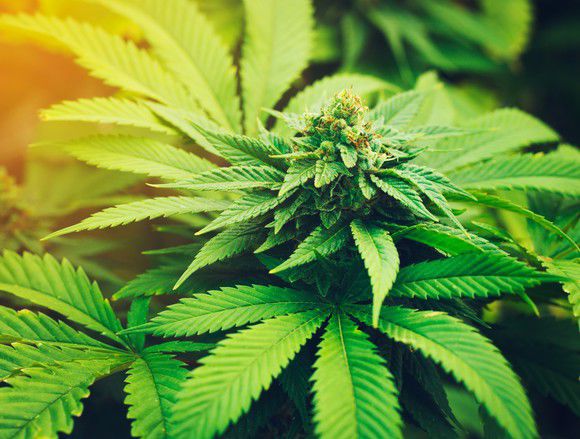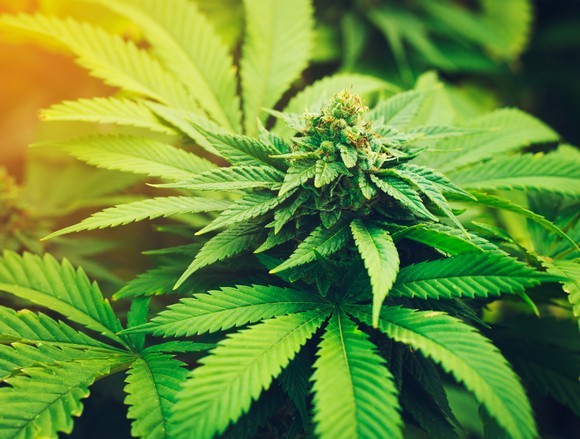Marijuana is among the fastest growing industries in North America, which is a big reason investors have pushed pot stock valuations considerably higher in recent years. A majority of marijuana stocks have gained 100%, 200%, or even more on a trailing-year basis.
One reason behind that excitement is the sales growth of legal weed. In the U.S., Marijuana Business Daily‘s newest report, “Marijuana Factbook 2017,” calls for sales growth of 45% this year, and 300% as an aggregate between 2016 and 2021. If these figures prove accurate, the U.S. market could be generating around $17 billion in annual sales by 2021. That’s certainly a convincing enough number to attract investors.
The other part of the equation for investing bulls has been the steady shift in the way the public views marijuana. Four polls since April 2017 — CBS News, Quinnipiac University, Gallup, and Pew Research Center — have all demonstrated an overwhelming favorability toward legalizing cannabis. For Gallup, the 64% who favored legalizing recreational pot in Oct. 2017 was the highest percentage on record over the poll’s 48-year history. It’s also markedly higher than the 25% who favored legalization back in 1995, the year before medicinal cannabis was legalized in California.
Medical marijuana is even more strongly favored by the public. An August 2017 Quinnipiac survey found that 94% of respondents support legalizing cannabis for medicinal use, which compares to just 4% who opposed the idea.
This new marijuana survey reveals a shocking finding
You probably had a good idea that when given a choice of making cannabis legal or illegal, most folks would choose legal. But understanding how marijuana is viewed relative to other legal vices isn’t always as clear. A new survey from NBC News and The Wall Street Journal was meant to clear that up.
The NBC News/Wall Street Journal survey asked 900 American adults across the country the following question:
If you had to choose just one, which of these four substances — alcohol, marijuana, sugar or tobacco — would you say is most harmful?
Mind you, marijuana is a Schedule I, and therefore illegal substance at the federal level, while alcohol and tobacco are regulated industries that can only be consumed by adults. Here were the responses:
As you might expect, tobacco led the way. In 1964, we learned from U.S. Surgeon General Luther Terry that smoking tobacco was linked to a higher risk of lung cancer and heart disease. It also is responsible for increasing the risk of developing a host of other cancer types and diseases. And as a reminder, cancer is the second-leading cause of death in the U.S.
Alcohol at 24% shouldn’t be a surprise, either. According to the Centers for Disease Control and Prevention, excessive alcohol was responsible for approximately 88,000 deaths a year between 2006 and 2010, with the average life lost being shortened by 30 years.
But the shock du jour is the 21% of Americans who chose sugar — a legal substance for all ages found in every convenience store — as being substantially more harmful than marijuana (21% vs. 9%). The long-term effects of sugar intake are still somewhat debated among researchers, as are the long-term impacts of cannabis use. Thus, to see such a marked difference in how the public views the two is really eye-opening and suggestive of just how much Americans’ views on pot have changed over the years.
As you might expect, tobacco led the way. In 1964, we learned from U.S. Surgeon General Luther Terry that smoking tobacco was linked to a higher risk of lung cancer and heart disease. It also is responsible for increasing the risk of developing a host of other cancer types and diseases. And as a reminder, cancer is the second-leading cause of death in the U.S.
Alcohol at 24% shouldn’t be a surprise, either. According to the Centers for Disease Control and Prevention, excessive alcohol was responsible for approximately 88,000 deaths a year between 2006 and 2010, with the average life lost being shortened by 30 years.
But the shock du jour is the 21% of Americans who chose sugar — a legal substance for all ages found in every convenience store — as being substantially more harmful than marijuana (21% vs. 9%). The long-term effects of sugar intake are still somewhat debated among researchers, as are the long-term impacts of cannabis use. Thus, to see such a marked difference in how the public views the two is really eye-opening and suggestive of just how much Americans’ views on pot have changed over the years.
Face the facts: Legalization isn’t happening under Jeff Sessions’ watch
Yet, in spite of these polls, the 29 states that have legalized medical cannabis, and the nine states that have legalized recreational weed (including Vermont, which just did so entirely through the legislative process), the U.S. pot industry has what might as well be zero chance of moving forward with Attorney General Jeff Sessions as the head of the Justice Department.
Face the facts: Legalization isn’t happening under Jeff Sessions’ watch
Yet, in spite of these polls, the 29 states that have legalized medical cannabis, and the nine states that have legalized recreational weed (including Vermont, which just did so entirely through the legislative process), the U.S. pot industry has what might as well be zero chance of moving forward with Attorney General Jeff Sessions as the head of the Justice Department.
Sessions has made it no secret how he really feels about cannabis. He’s been quoted as saying “good people don’t smoke marijuana,” and has previously suggested that medical cannabis isn’t an appropriate substitute to fight the opioid crisis. But he made his intentions perfectly clear when, in May of last year, he sent letters to a handful of his congressional colleagues requesting the repeal of the Rohrabacher-Farr Amendment (also known as the Rohrabacher-Blumenauer Amendment). This Amendment is what protects medical marijuana businesses from federal prosecution, as it disallows the Justice Department from using federal dollars to go after medical weed companies.
Though Sessions has thus far been unsuccessful in his attempts to keep this Amendment out of future spending bills, he has been able to rescind the Cole memoas of earlier this month. The Cole memo described a loose set of rules that states would follow in order to keep the federal government in a hands-off stance. This included ensuring that cannabis grown in a legal state stayed within that state. It also meant keeping adolescents away from pot. Its removal opens the door for state prosecutors to use their discretion and potentially bring charges against cannabis businesses.
If you want to invest in marijuana, look north
Despite overwhelming support in the states, it’s Canada that looks to lead the way for the world, and investors, when it comes to legalization.
In April 2017, Prime Minister Justin Trudeau introduced a bill designed to legalize weed for adults by July 2018. Though it faced opposition and questions, those obstacles have mostly been overcome. Progressives are firmly in charge of Canada’s parliament, negating concerns of the more conservative opposition, and a recently arranged tax-sharing deal between the federal government and provinces paves the way for regulations to be in place by this coming summer. When fully ramped up, the adult-use weed industry in Canada could generate $5 billion in annual sales.
Investors considering Canadian marijuana stocks really have two choices. They can aim for a leader in market share, which has likely already seen a huge uptick in its share price, or they can opt for a more unproven name and hope everything works out.
Among the bigger names, MedReleaf (NASDAQOTH:MEDFF) is one to keep on the radar. Its pockets may not be as deep as those of some of its peers, but it’s been focusing on extracts and cannabis oils far more than its competition. These are higher-priced and higher-margin products, which means MedReleaf doesn’t have to sell nearly as much product to earn the same amount of profit.
Among smaller growers, OrganiGram Holdings (NASDAQOTH:OGRMF) is worth keeping an eye on. The company recently announced its intention to more than triple its annual production capacity to 65,000 kilograms of dried cannabus by more than doubling its grow capacity to 429,000 square feet. What makes OrganiGram unique is that its entire operation can be found at a single site (Moncton, New Brunswick), which helps keep costs down.
My suggestion remains that investors focus on Canada, not the U.S. market, until we see a marked change in U.S. federal law, or the position of Sessions from the Justice Department.
credit:fool.com












![West Virginia [WV] Legislature Approves Medical Marijuana Bill](https://thelaughinggrass.com/wp-content/uploads/2017/04/West-Virginia-WV-Legislature-Approves-Medical-Marijuana-Bill.png)